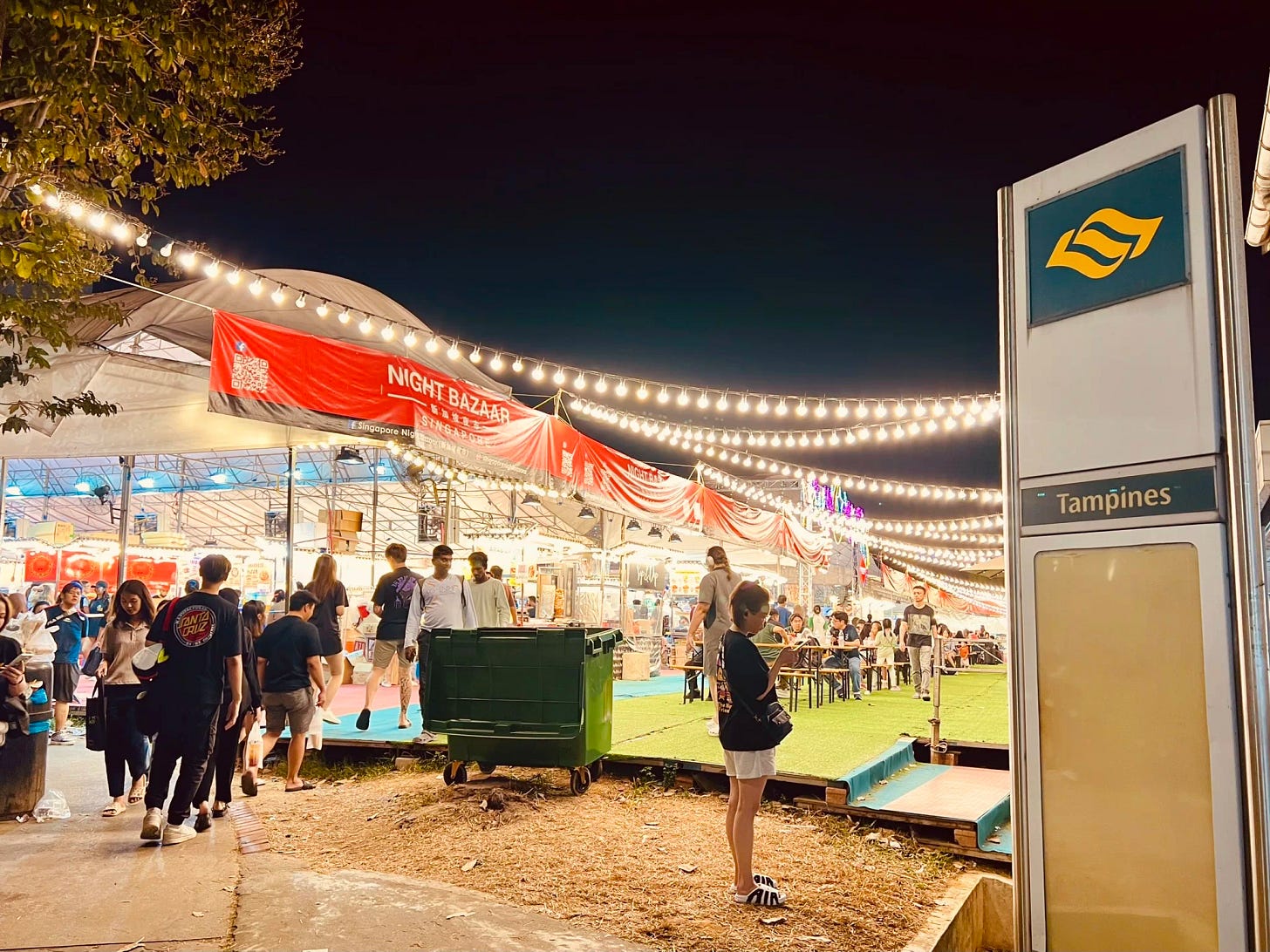Unpacking Malay Gangsterism Aesthetics in Pasar Malam
In the bustling world of Singapore’s pasar malam, it is no longer just the sizzle of Ramly burgers or the pastel-hued mountain of apam balik that draws a crowd. Increasingly, it is the loud, brash, and swagger-heavy promotional videos that often featuring men clad in singlets, gold chains, sunglasses at night, and exaggerated “Matrep” lingo that go viral on TikTok and Instagram Reels. These portrayals are part of a growing trend where Malay gangsterism aesthetics are deliberately used to market street food stalls.
Far from random humour, this performance taps into deeper cultural codes and racial narratives that shape how Malays are seen, and how some Malays choose to reclaim that image for both profit and visibility.
The Performative “Gangster Melayu” Persona
Scroll through your social media feed during Ramadan bazaar season, and you might find a familiar trope: a Malay man, shirt half-unbuttoned, gesturing flamboyantly while shouting, “Kunafa ni paling power bro, jangan main-main!” (This kunafa is the best bro, don’t play-play!).
There’s often a dramatic intro with EDM or old-school dangdut music, and subtitles peppered with Hokkien slang and Malay expletives.
This deliberate persona: flamboyant, aggressive and charismatic draws from the stereotype of the “rempit” or “Matrep”, a subcultural image often associated with underachievement, rebellion, and hypermasculinity. While these personas used to be frowned upon, they are now being reimagined as a marketing tool, one that plays on the line between mockery and celebration.
Why It Works: Authenticity, Humour, and Visibility
The appeal lies partly in its hyper-local flavour. In a world saturated with slick, Westernised influencer marketing, these videos offer something raw and relatable. They speak the language of the heartlands, of neighbourhood uncles and Gen Zs alike who appreciate a bit of kampung swagger.
There is also a certain self-awareness in these portrayals: many of the men and women behind the stalls know they are exaggerating a persona. It’s a form of satirical performance that attracts engagement because it is both funny and familiar. In Singapore’s TikTok ecosystem, humour and irony are currency. And if a parody of Malay gangsterism sells keropok lekor or Thai milk tea, many stall owners are happy to oblige.
But beyond the humour lies a deeper strategy: visibility. With over a hundred stalls at major pasar malam events, standing out is crucial. The gangster persona becomes a kind of branding device, a way to carve out a niche identity in a saturated market.
Playing into or Pushing Back Against Stereotypes?
However, the question remains: are these portrayals reinforcing harmful racial stereotypes, or are they reclaiming them with agency?
The Malay community in Singapore has long been subject to narratives of social underachievement and delinquency. The “Malay gangster” trope has its roots in decades-old state discourses and media portrayals that disproportionately link Malays to crime, drugs, and educational failure. In this light, the pasar malam trend could be seen as playing into these harmful associations, making a joke of Malay backwardness for the sake of commercial gain.
But some argue it is quite the opposite. By taking control of these images and performing them with irony and success, stall owners are reappropriating the stereotype, turning what was once a label of shame into a badge of pride or profit. In this way, the performance becomes an act of cultural subversion.
Moreover, these portrayals do not represent the entire Malay experience. In fact, their exaggerated nature may highlight just how constructed and ridiculous the stereotypes are in the first place.
The TikTokification of the Pasar Malam
This trend would not have taken off without social media platforms, especially TikTok and Instagram, which reward short, entertaining, highly shareable content. Pasar malam stalls are no longer just physical spaces, they are now digital brands. The gangster aesthetic, with its boldness and meme potential, fits perfectly into the algorithm.
This signals a shift in entrepreneurial Malay youth culture. Rather than distancing themselves from so-called “negative” stereotypes, they are monetising them, leaning into the very traits that once marginalised them, street smarts, rawness and flamboyance, and now turning them into cultural capital.
Conclusion: Harmless Fun or Something More?
The use of Malay gangsterism in pasar malam promotion is more than just a funny trend. It is a mirror reflecting the complexities of identity, commerce, and race in Singapore. Whether seen as self-deprecating humour, smart branding, or problematic stereotyping, it demands a closer look.
In the end, perhaps the most interesting question is not whether these portrayals are “good” or “bad,” but what they reveal about who gets to define Malayness, and who profits from it, in Singapore’s evolving cultural economy.




